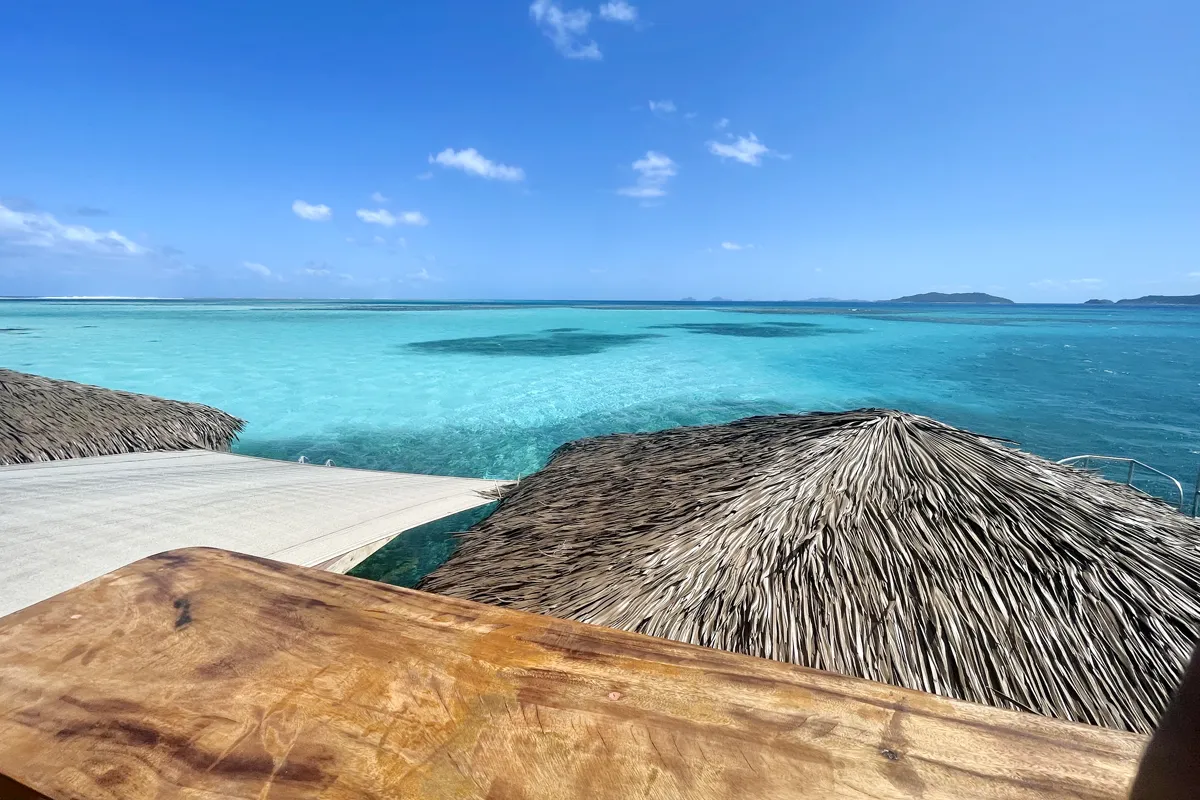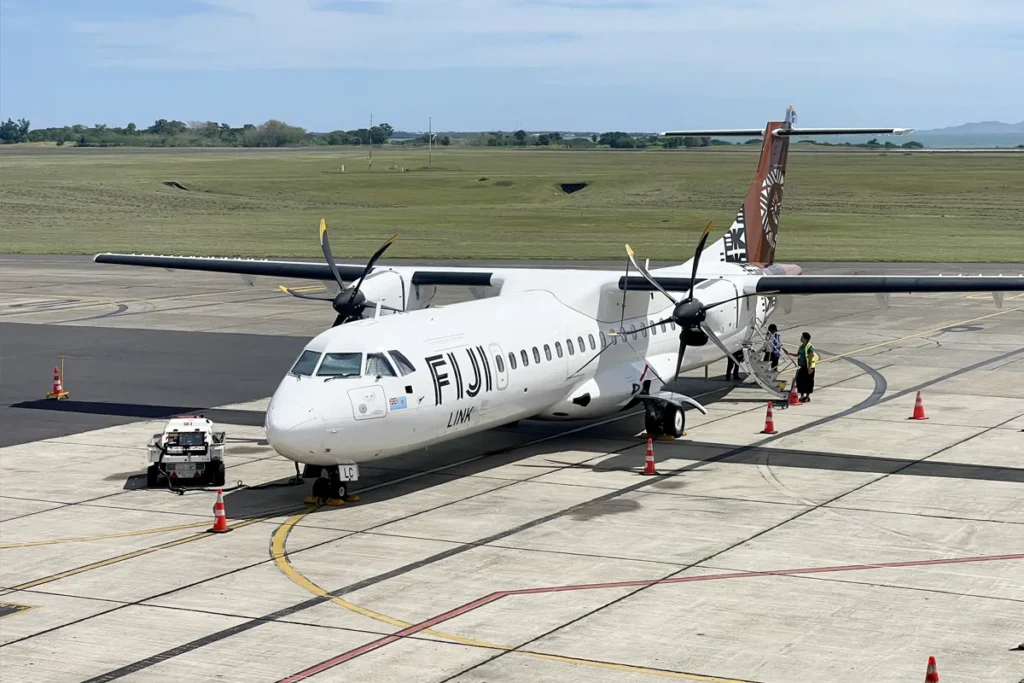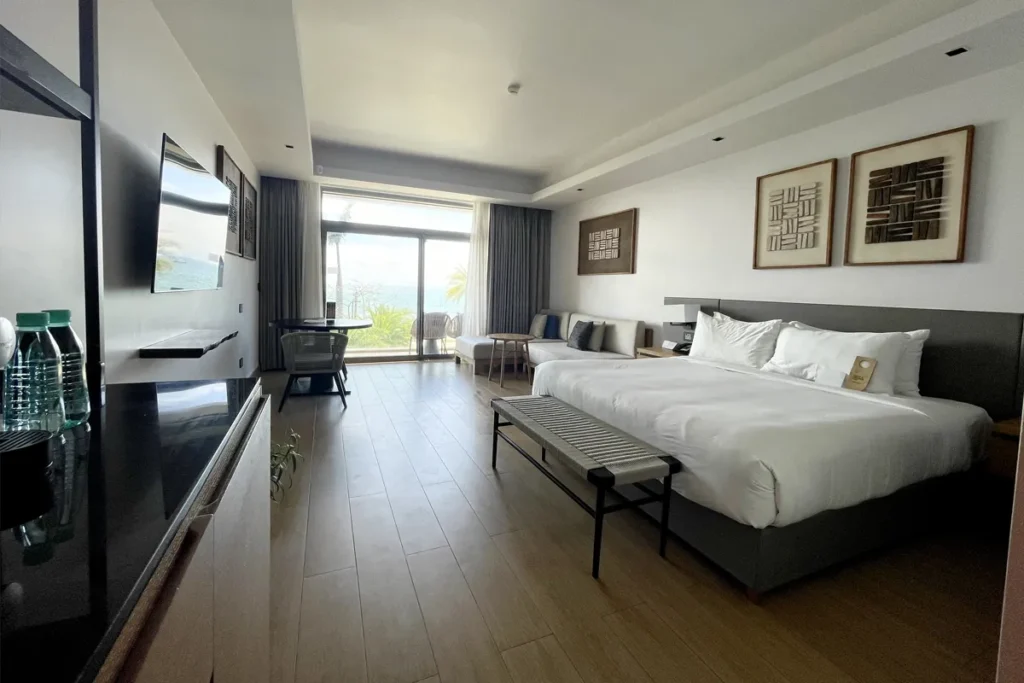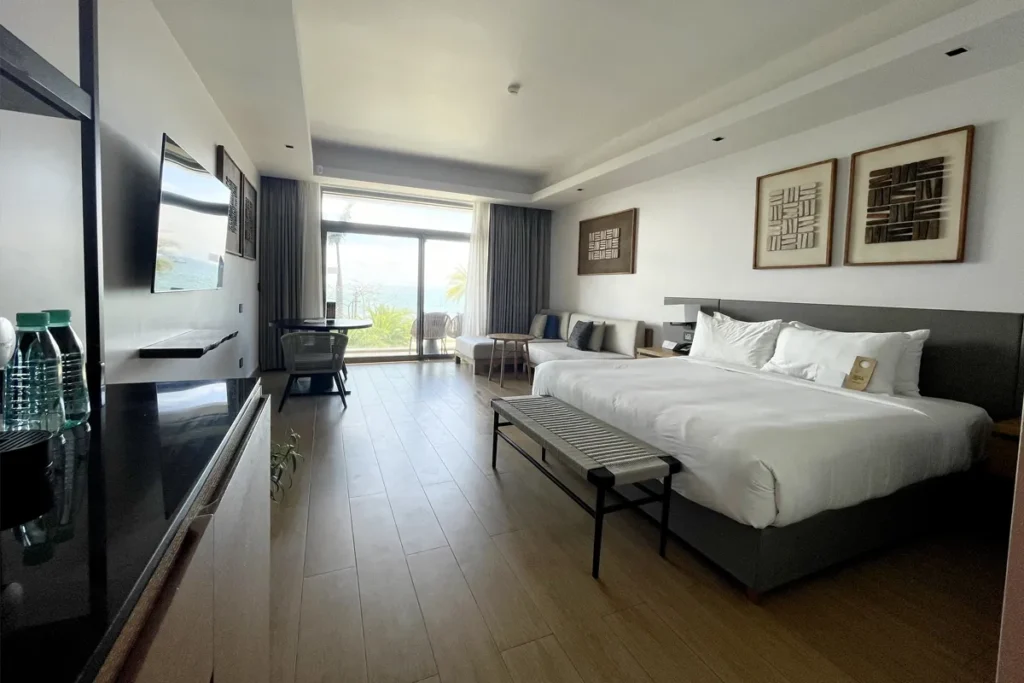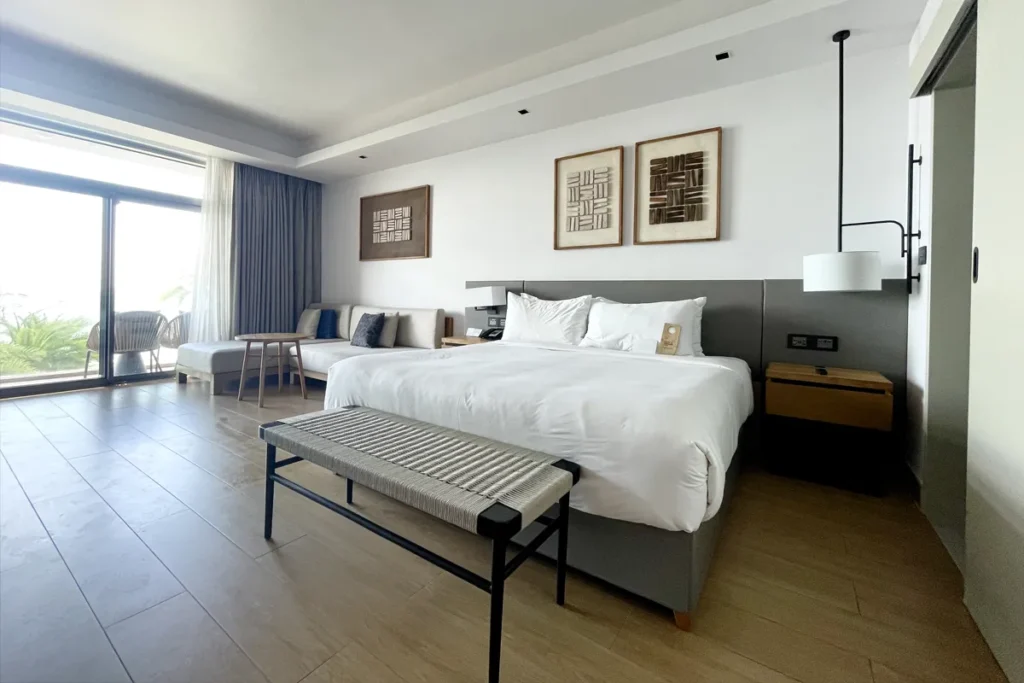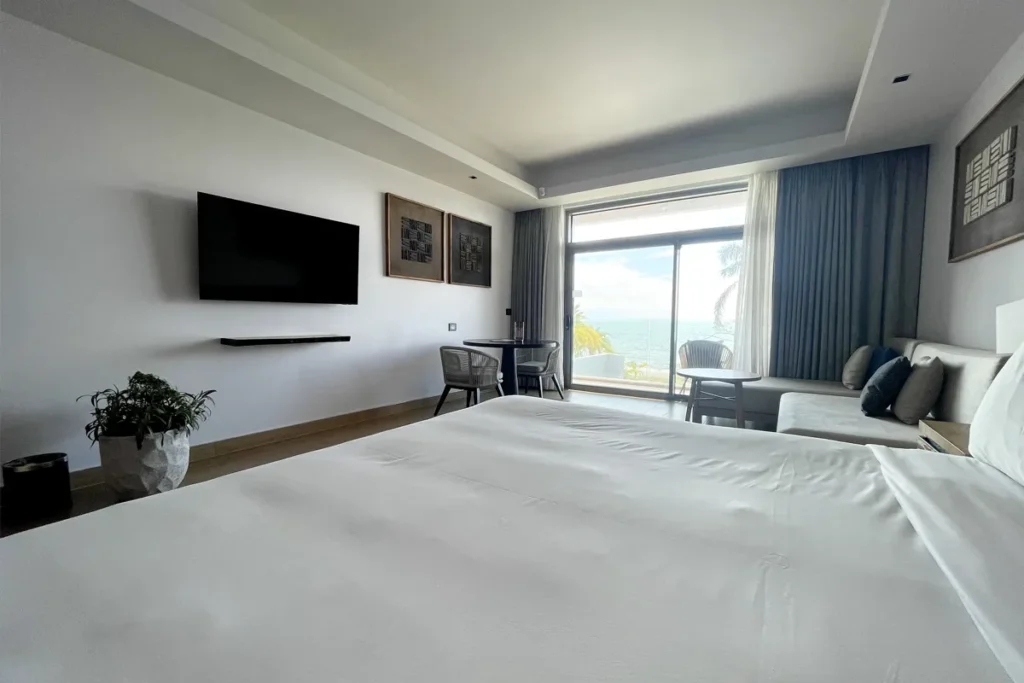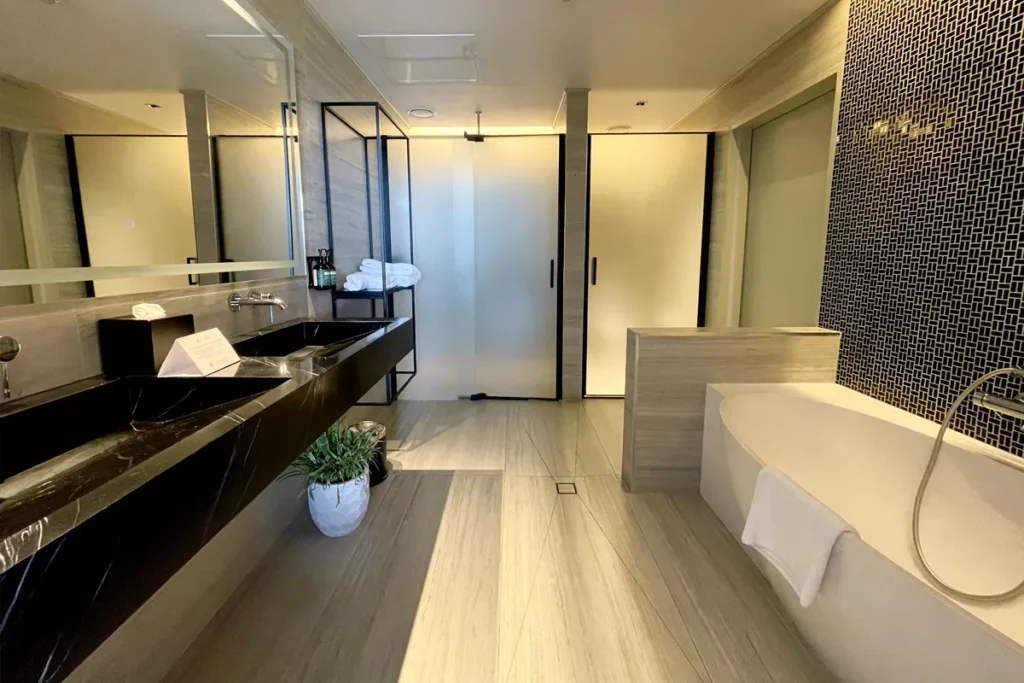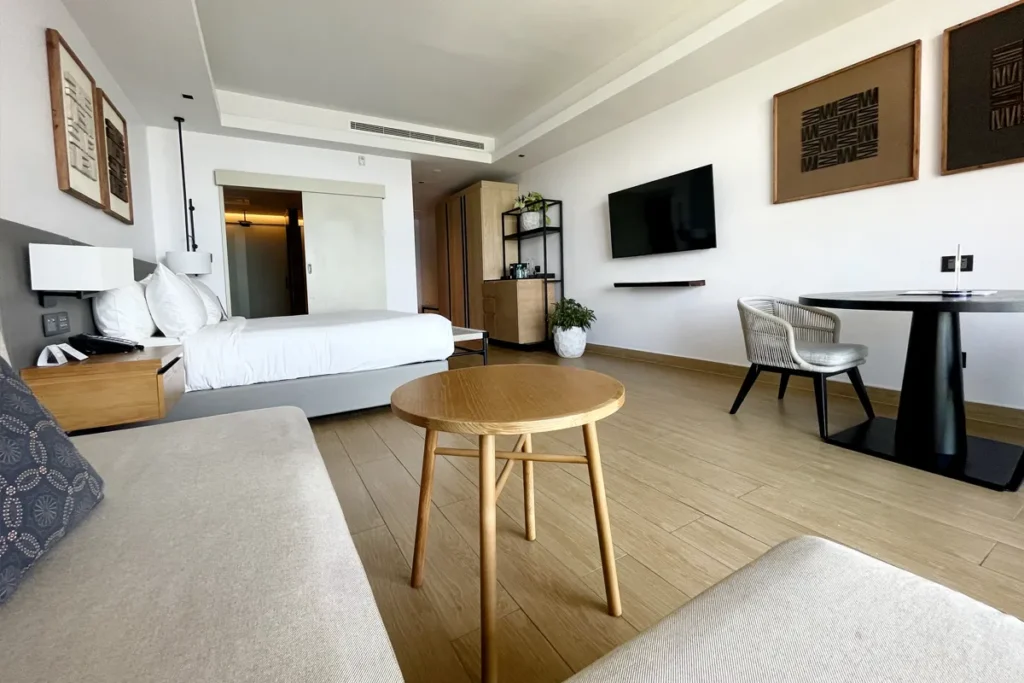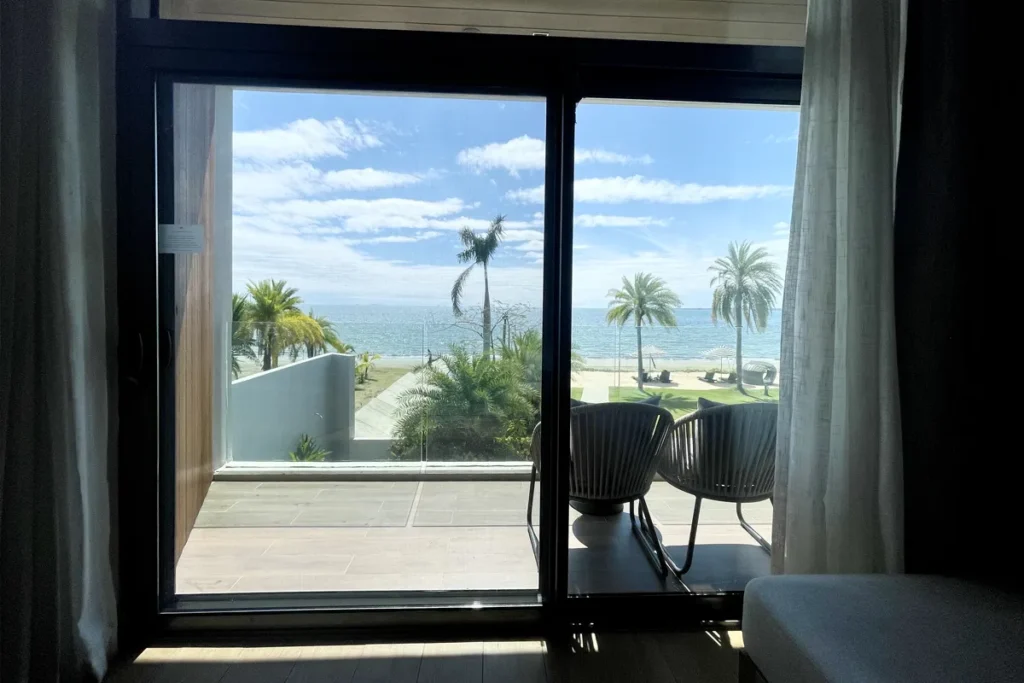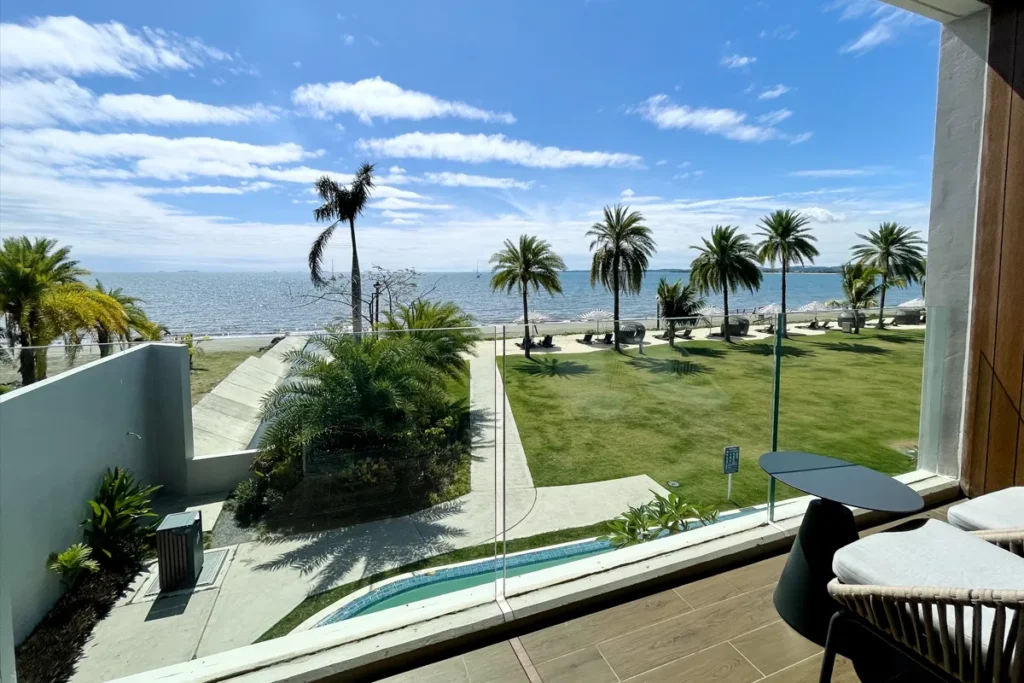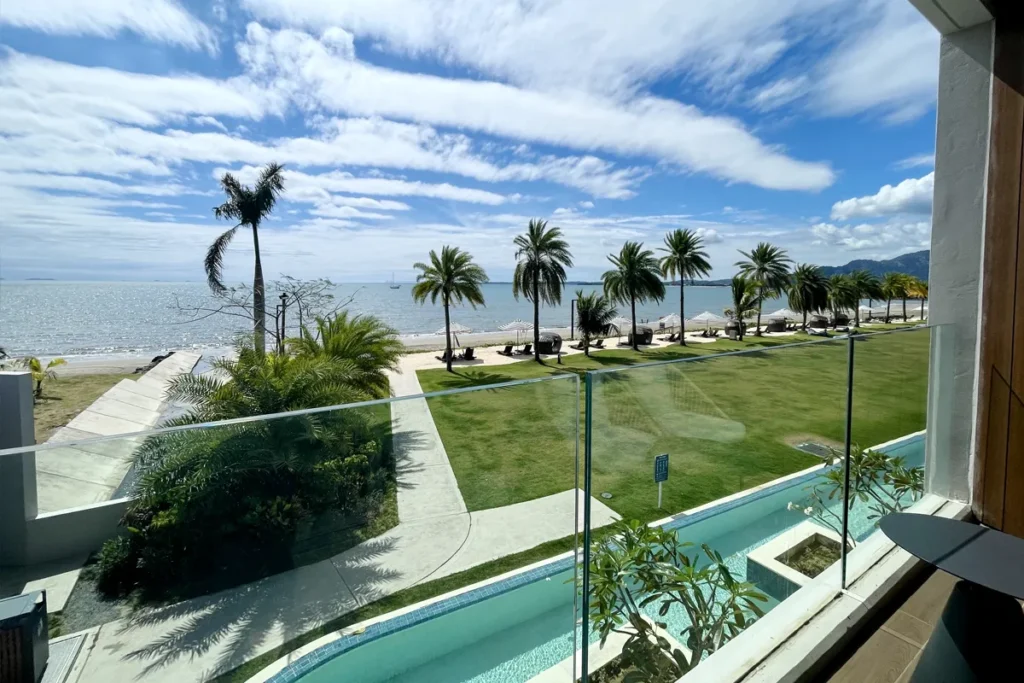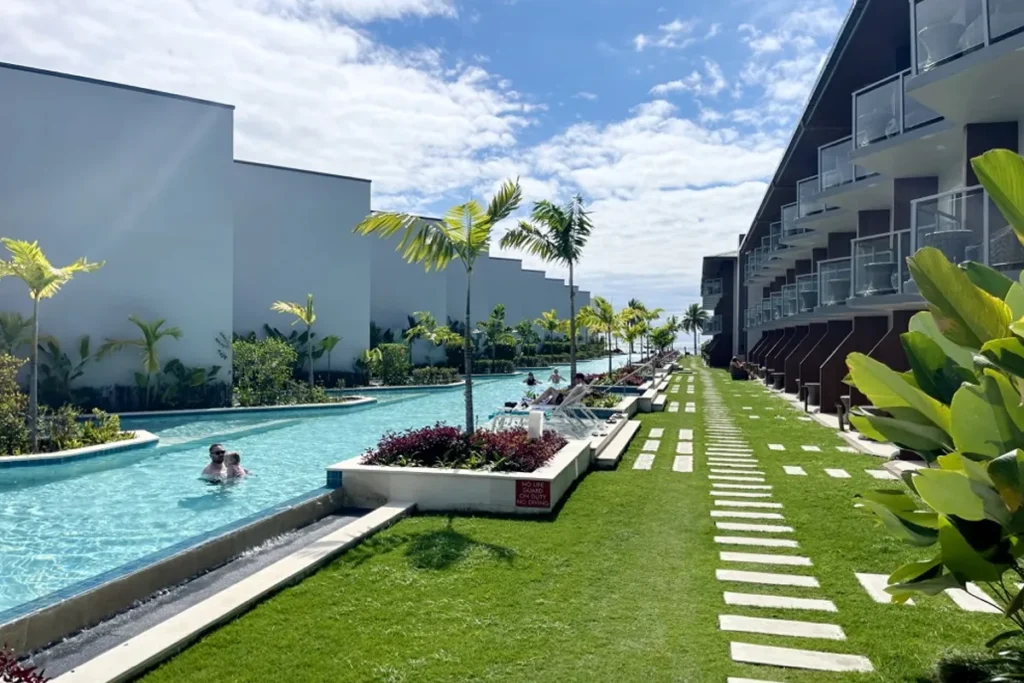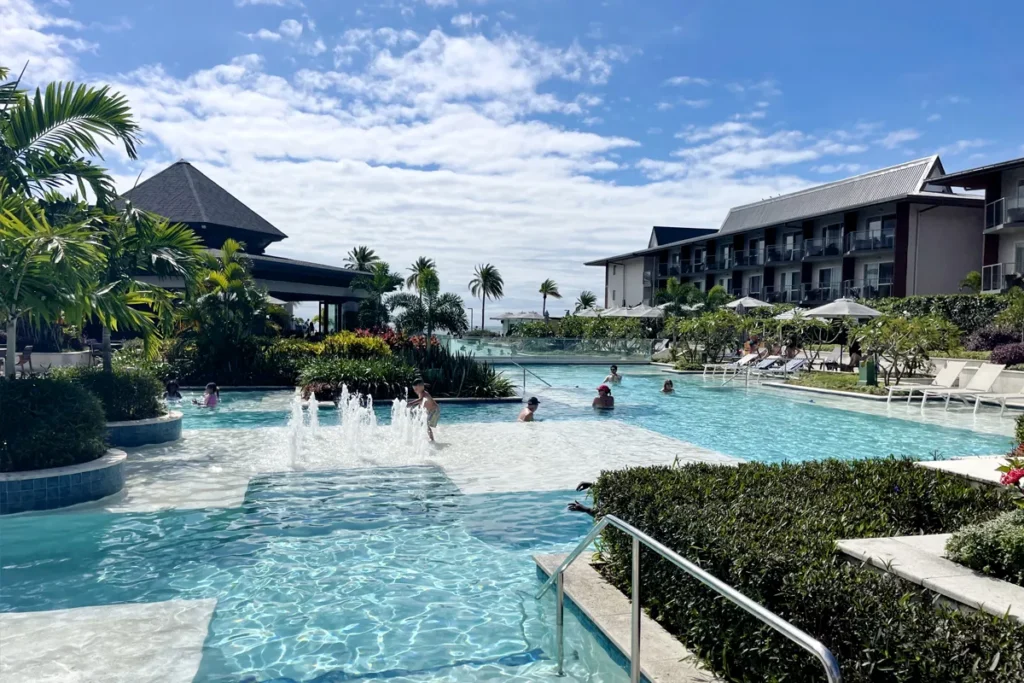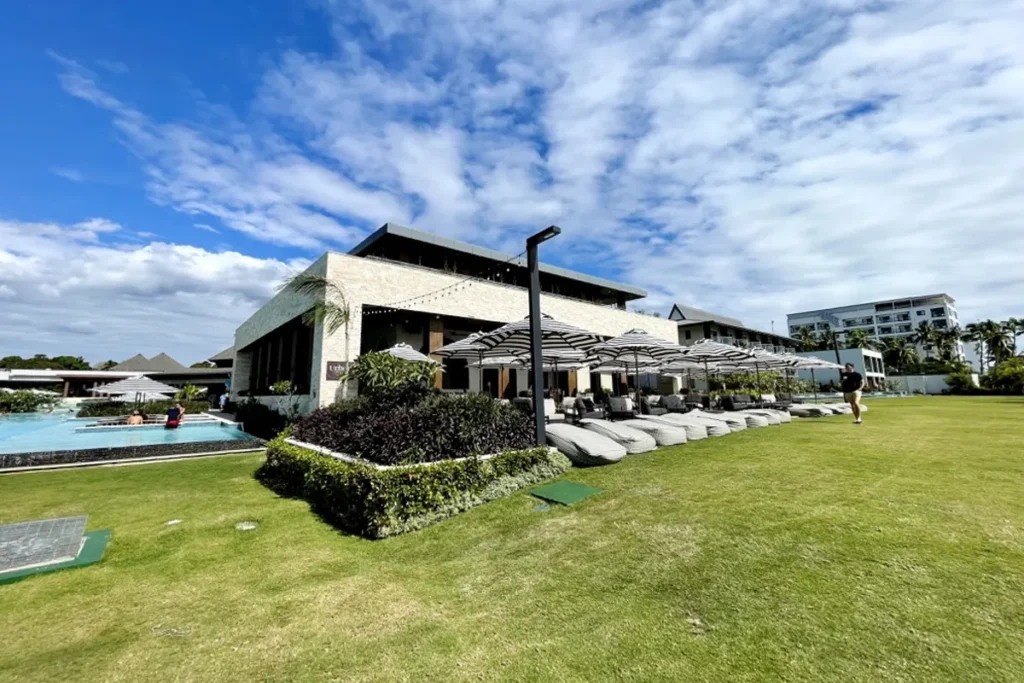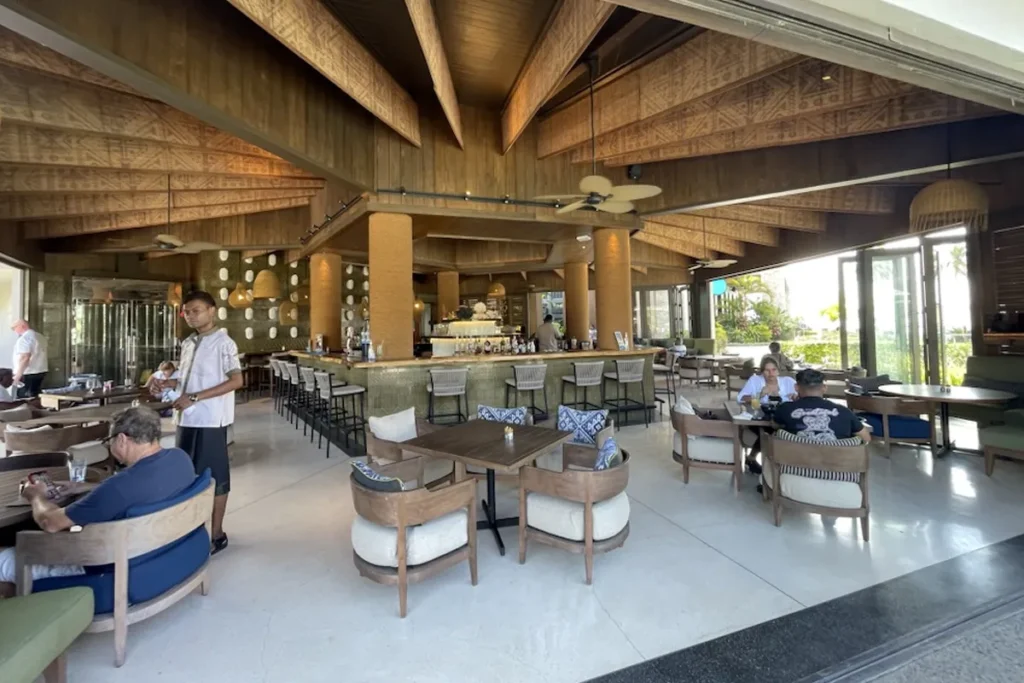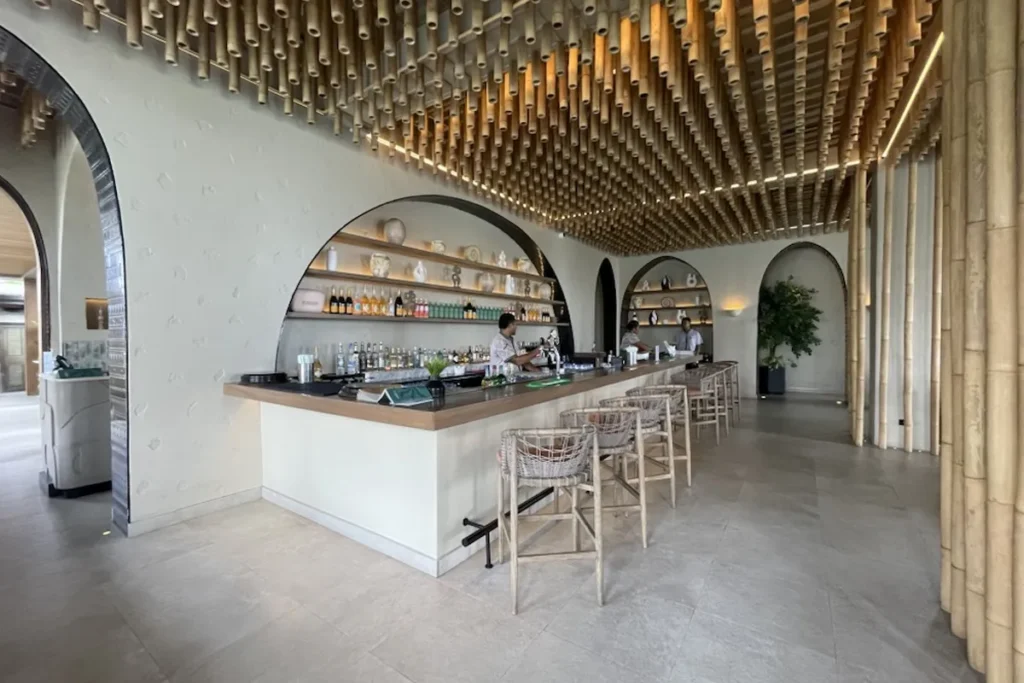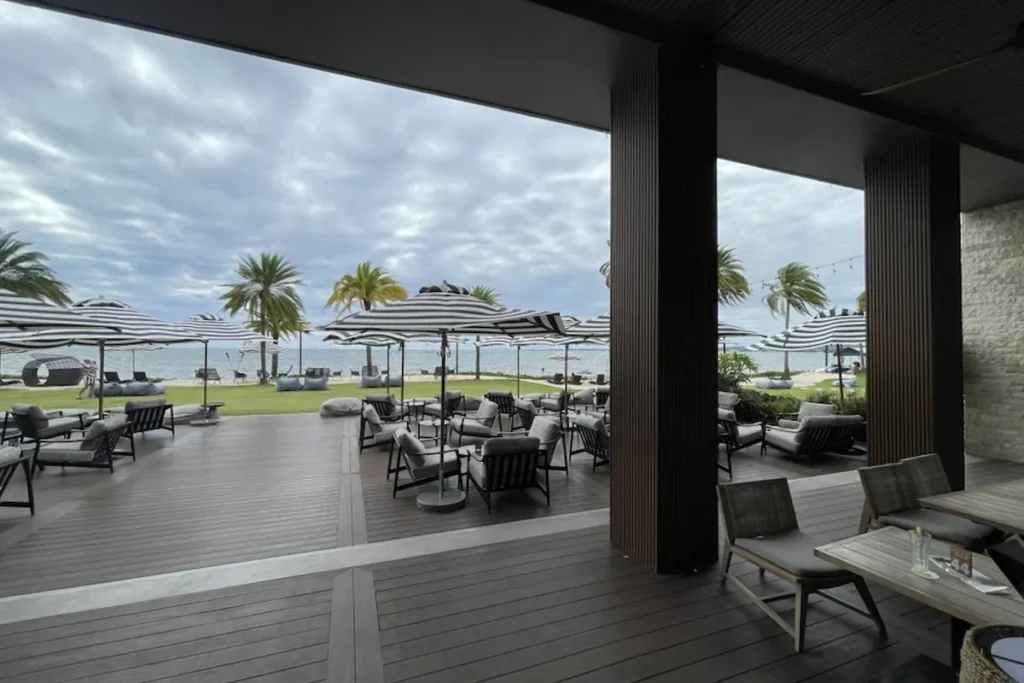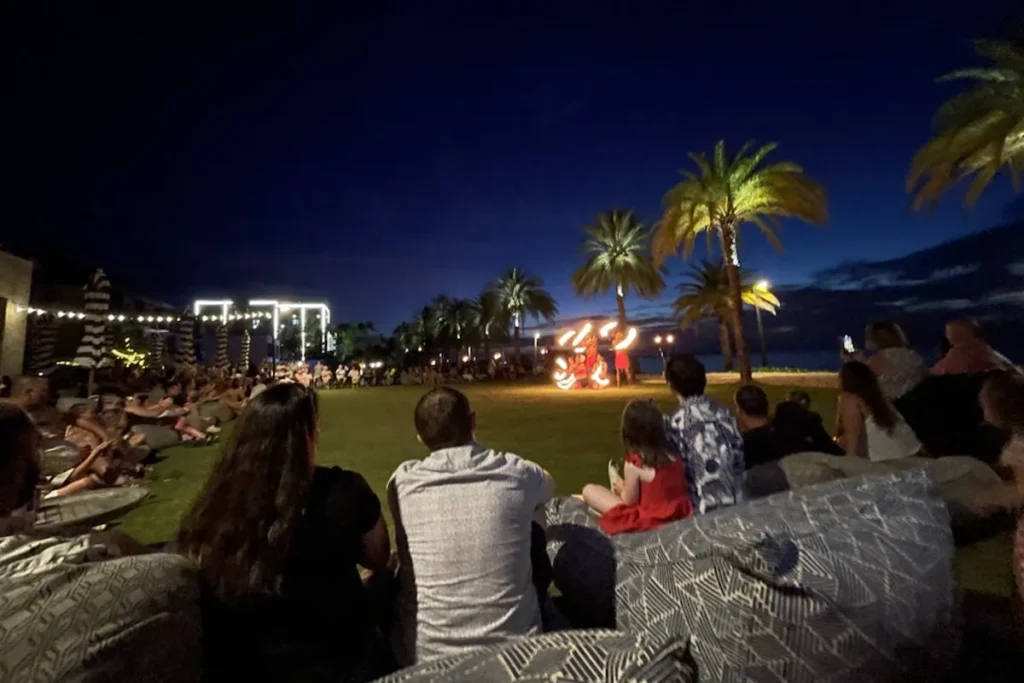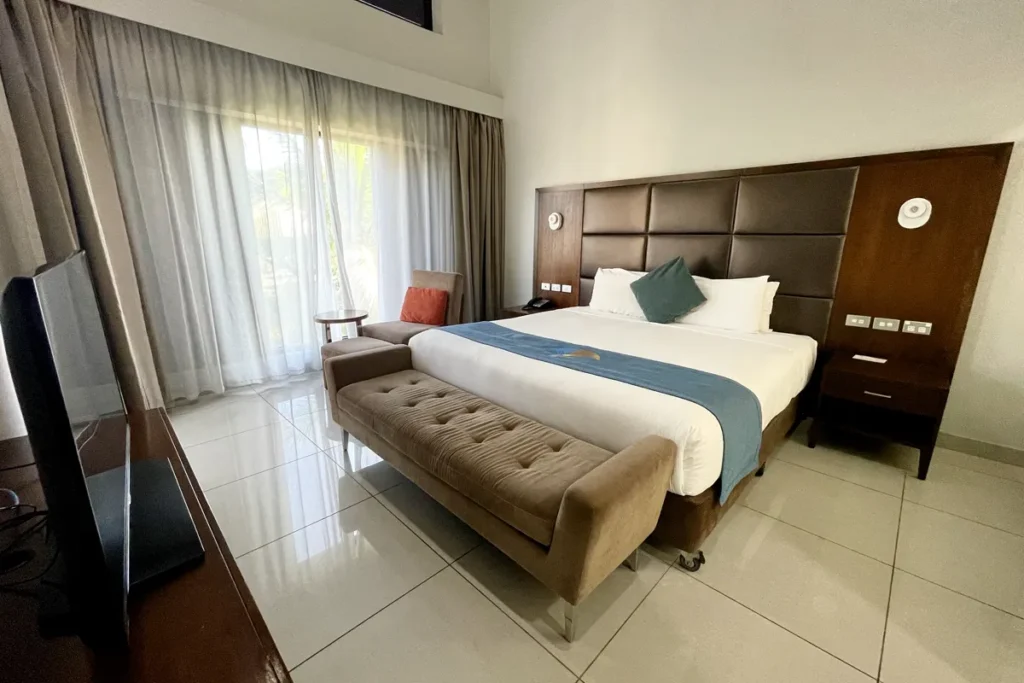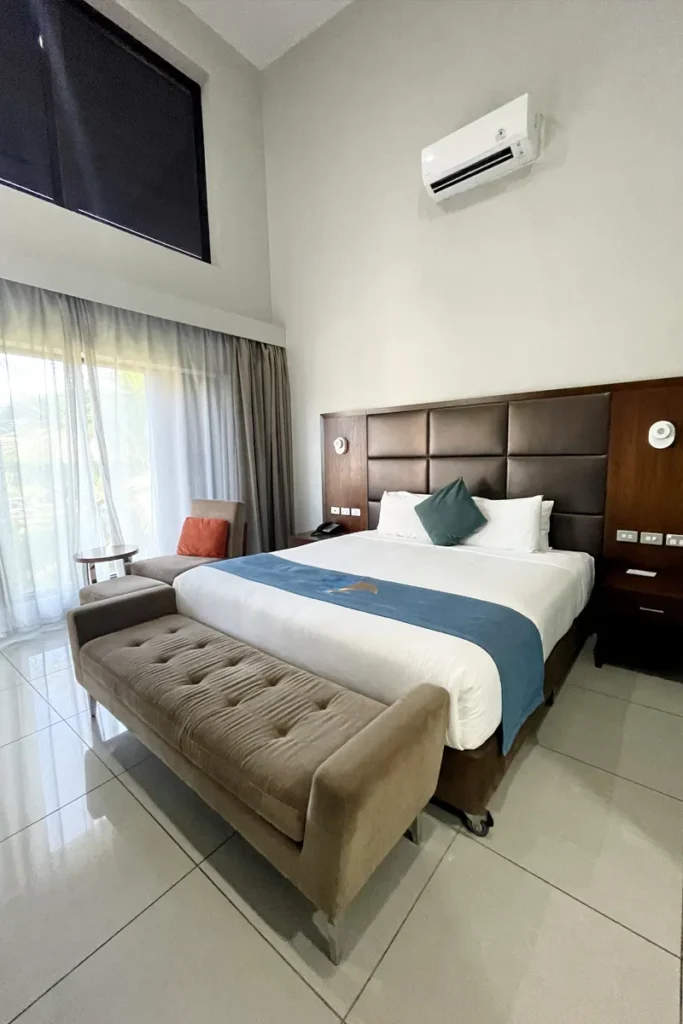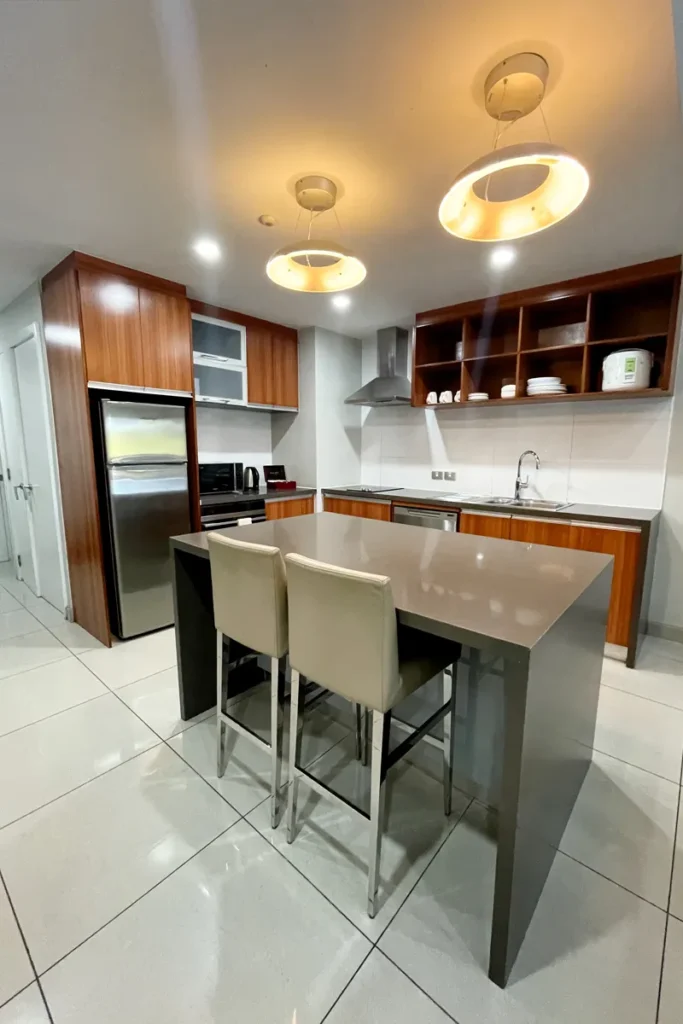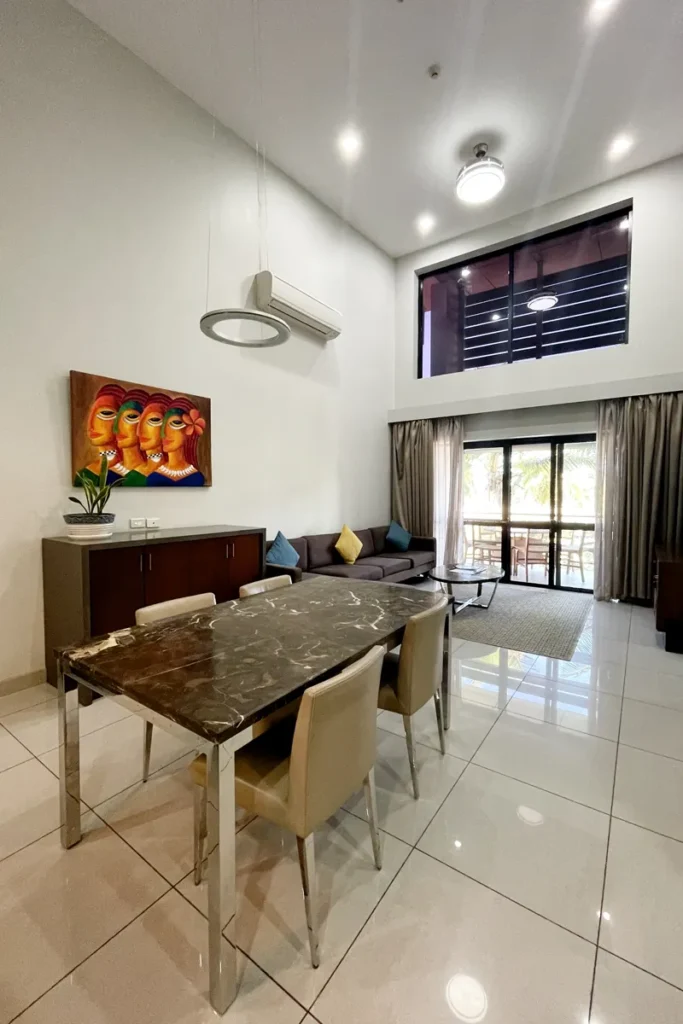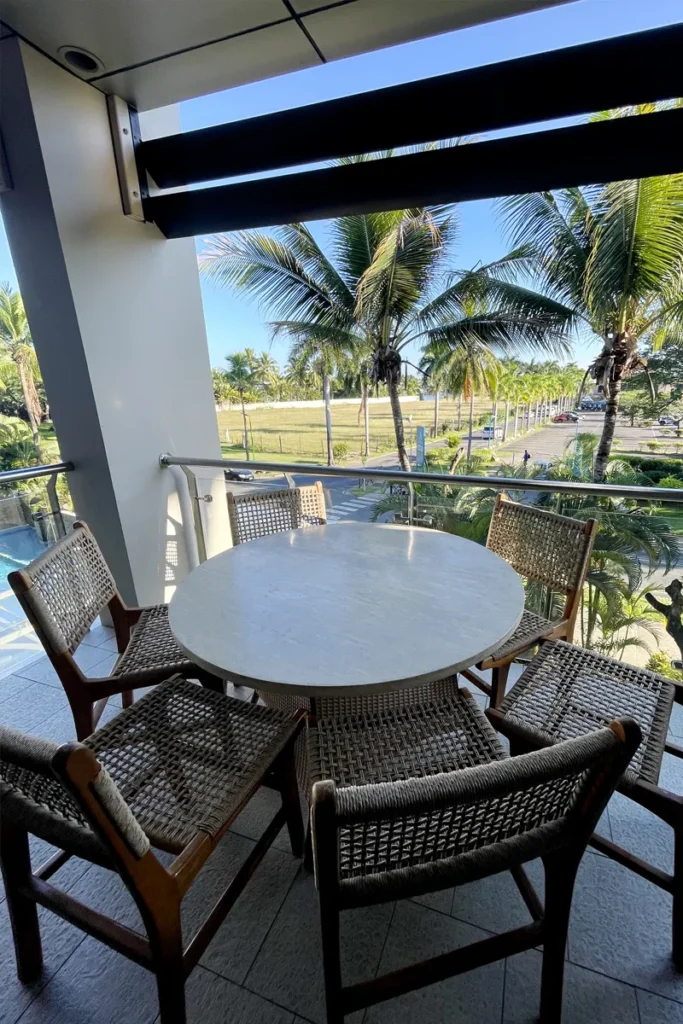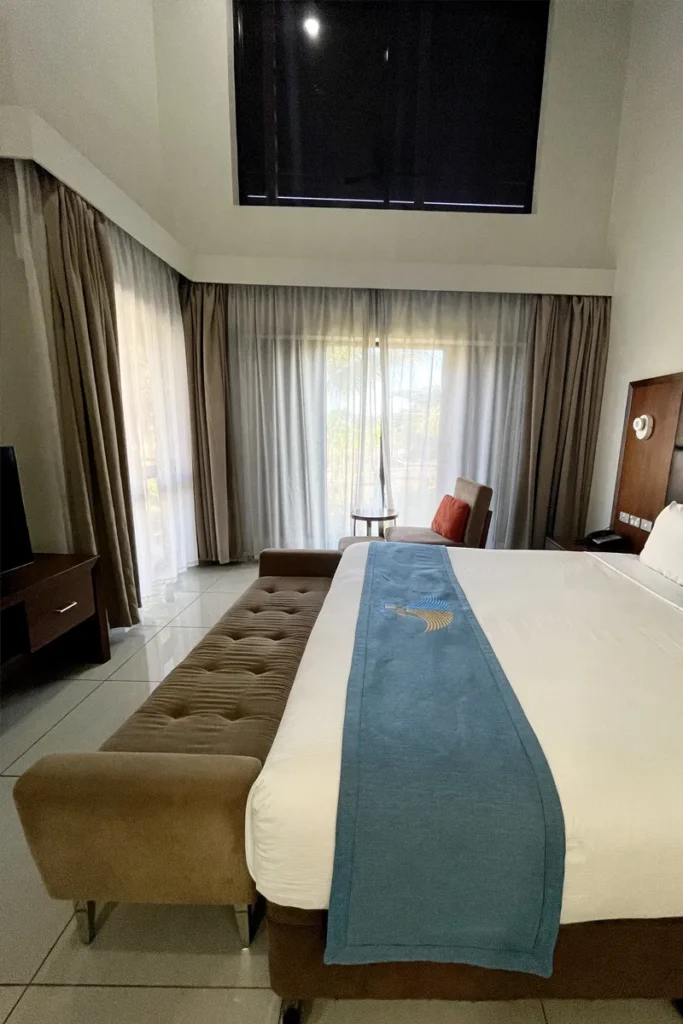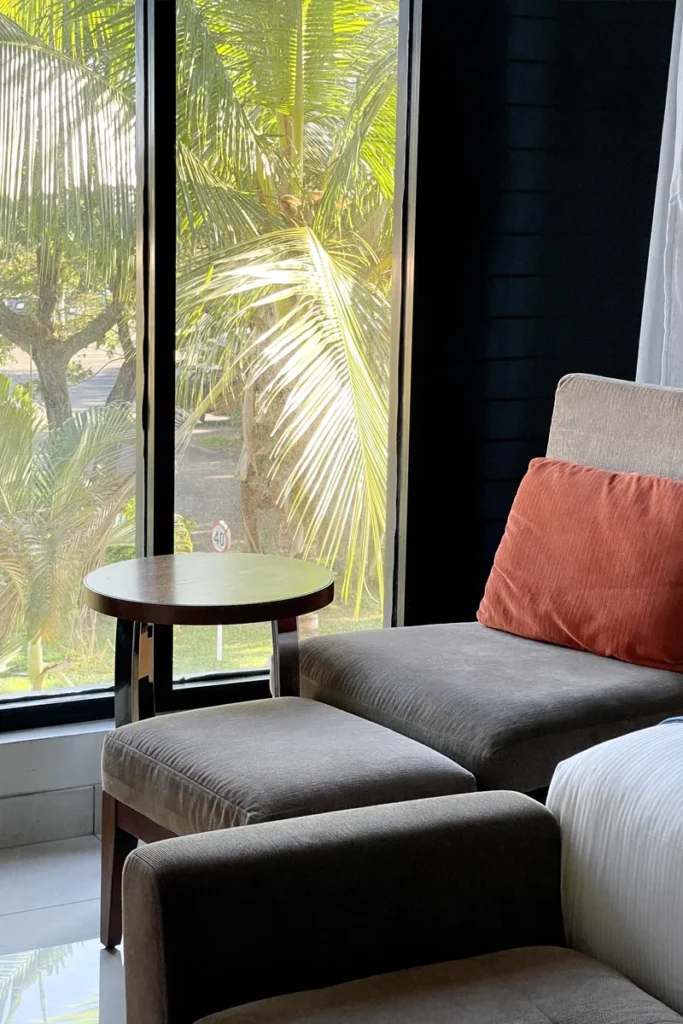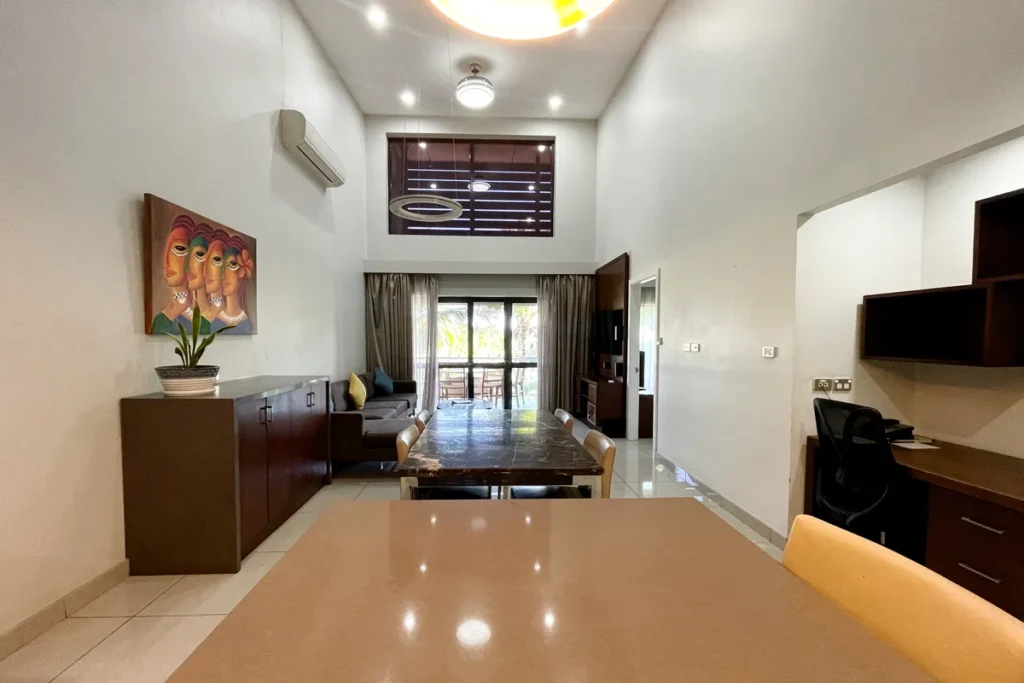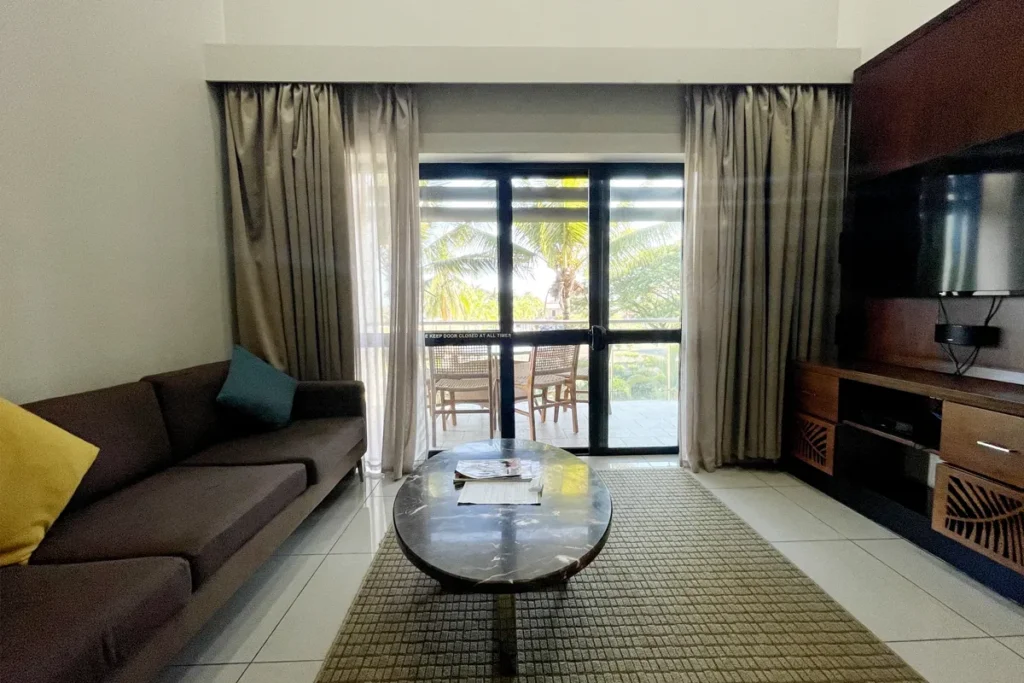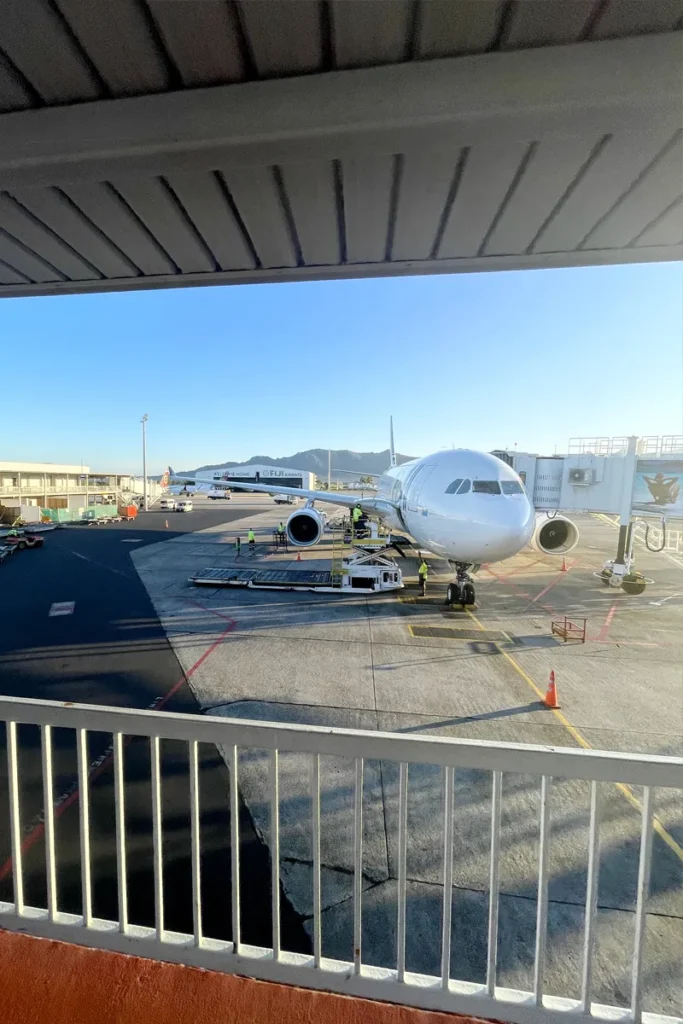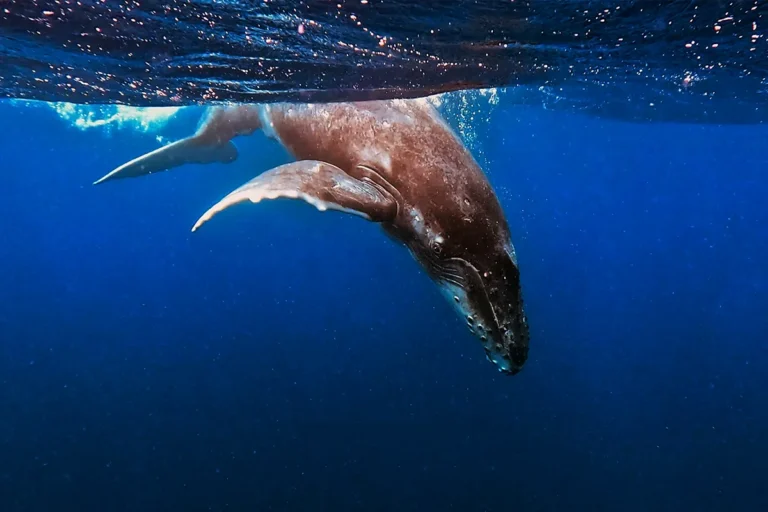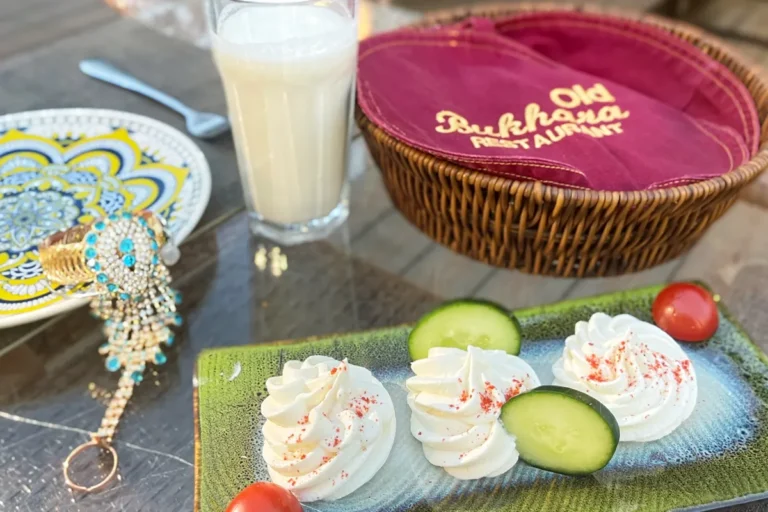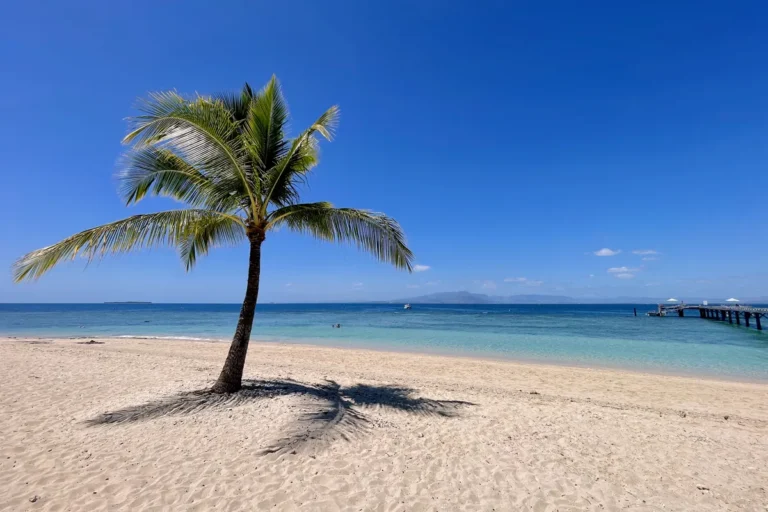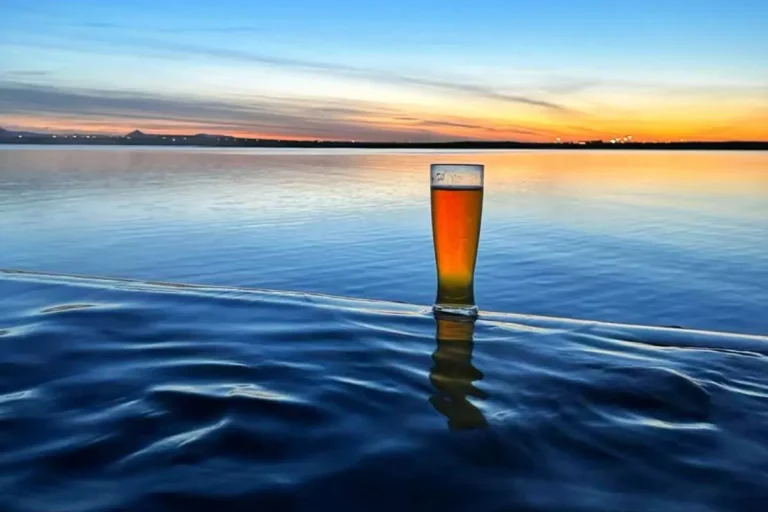Fiji is one of the world’s most popular destinations, known for its world-class resorts, warm hospitality, crystal-clear waters, and tropical cuisine. This Ultimate Guide to the Best Fiji Travel covers everything you need to know to plan the perfect vacation to Fiji.

1. Overview
Background of the Country
Fiji is an island paradise in the South Pacific, located about 2,000 km northeast of New Zealand and 4,000 km east of Australia. It is made up of more than 330 islands, with a population of around 900,000, most of whom live on the two largest islands, Viti Levu and Vanua Levu.
Fiji is famous for its crystal-clear waters, vibrant coral reefs, and stunning beaches, making it a top destination for snorkeling, diving, and island-hopping adventures. The Mamanuca and Yasawa islands, in particular, offer some of the most accessible and breathtaking marine experiences in the world, attracting travelers seeking both relaxation and underwater exploration.
Why Travel Here
Fiji isn’t just a dream getaway only 10 hours from California, it’s also the perfect transit hub to Tonga, where you can swim with majestic humpback whales. I stopped in Fiji on my way to Vava’u for a once-in-a-lifetime whale swim and spent five days island hopping in turquoise waters, soaking up the joyful culture, hearing “bula” everywhere, and enjoying some of the best seafood I’ve ever tasted.
Beyond its strategic location, Fiji is a top vacation destination for couples and families, offering the perfect mix of relaxation and adventure. The islands are home to plenty of chain resorts, excellent restaurants, and a wide variety of activities for every type of traveler. Fiji is very safe, welcoming, and not overly expensive, making it an easy choice for both first-time visitors and seasoned island explorers.
Being in the Southern Hemisphere, Fiji and its South Pacific neighbors attract travelers from the Northern Hemisphere during the colder months, with a holiday peak from mid-December to early January when visitors flock to celebrate Christmas and New Year in the tropics. If you’re looking for a sunny escape from the cold, Fiji is the perfect destination. From soft sandy beaches to snorkeling among vibrant coral reefs to indulging in world-class cuisine, Fiji has something for everyone.
Consider Fiji as your winter getaway. Swap the cold for sunny beaches, vibrant coral reefs, and a laid-back island vibe.
2. Exploring Fiji
Key Areas
Fiji is made up of more than 330 islands, grouped into several main regions.
- Viti Levu – The largest island and the heart of Fiji, home to the capital, Suva, and the main international airport in Nadi. Here you’ll find bustling markets, cultural centers, scenic coastal towns, and access to adventure activities like hiking, river rafting, and visits to traditional Fijian villages.
- Vanua Levu – Fiji’s second-largest island, known for its unspoiled nature, coral reefs, and friendly local communities. It’s ideal for snorkeling, diving, and exploring waterfalls, hot springs, and remote beaches away from the crowds.
- Mamanuca Islands – A popular group of small islands west of Nadi, famous for crystal-clear waters, coral reefs, and soft sandy beaches. Perfect for snorkeling, surfing, and luxury or boutique resorts.
- Yasawa Islands – A stunning chain of islands northwest of Viti Levu, known for turquoise lagoons, dramatic cliffs, and traditional Fijian culture. Ideal for island hopping, diving, and experiencing authentic village life.
- Kadavu – A quieter island south of Viti Levu, home to some of Fiji’s best diving spots, lush rainforests, and remote beaches. It’s perfect for nature lovers and travelers looking for seclusion.
For first-time visitors, most of your trip will center around Viti Levu, Fiji’s main island. You can either stay at a resort on nearby islands or use the main island as your base while island-hopping each day. Whichever you choose, you’re guaranteed an incredible beach escape, complete with Fiji’s welcoming spirit and a dazzling underwater world.
For first-time visitors, most of your adventure will revolve around Viti Levu, Fiji’s main island and the hub for culture, beaches, and day trips.
Must-See Attractions
Most travelers come to Fiji for its islands and beaches. While there are a few attractions on land, I recommend spending as much time as possible out on the water. With dozens of islands to choose from, the two most popular groups are the Mamanuca Islands — known for their easy access, white-sand beaches, and lively reefs — and the Yasawa Islands, a more remote chain famous for dramatic landscapes, hidden lagoons, and incredible snorkeling. Here are some of the must-visit spots to add to your list:
- Malolo Island – One of the most popular Mamanuca Islands, Malolo is where you’ll find floating bars like Cloud 9 and Seventh Heaven, perfect for cocktails, music, and ocean views.
- Malamala Island – Home to the world’s first beach club on its own island. Day passes include infinity pools, cabanas, and all-day cocktails just a short boat ride from Port Denarau.
- South Sea Island – Tiny but lively, this is one of Fiji’s most popular day-trip spots. You can circle the whole island in minutes, but it’s packed with activities — snorkeling, kayaking, a pool, and cultural shows.
- Bounty Island – A quiet getaway and a stop for Captain Cook Cruises. It’s known for its clear waters, coral gardens, and laid-back vibe.
- Beachcomber Island – Famous as Fiji’s “party island,” this little spot is ideal if you want music, nightlife, and a social atmosphere mixed with snorkeling and beach time.
- Schooner Island (Schooner or Tivua Island) – Visited on the popular Whale’s Tale Cruise, this tiny private island offers pristine beaches, water sports, and all-inclusive meals and drinks.
- Monuriki Island – The uninhabited island made famous by the movie Cast Away. Expect rugged beauty, dramatic cliffs, and untouched beaches.
- Kuata Island – Best known for its shark encounters, where you can safely snorkel with reef sharks in their natural habitat.
- Drawaqa Island – Famous for its manta ray encounters (seasonal, May to October). A must-do for nature lovers and underwater adventurers.
Must-Try Dishes
Fiji is blessed with an abundance of fresh seafood, and locals know exactly how to bring out the best in it. Thanks to Indian influences, you’ll often find dishes infused with fragrant curries and spices, while creamy coconut adds a tropical twist. The result is bold, flavorful meals that take fresh fish and seafood to another level. It’s no exaggeration to say that Fiji offers some of the best food you’ll find in any tropical destination.
- Kokoda – Fiji’s take on ceviche, made with fresh fish marinated in lime juice, coconut cream, onions, and tomatoes. Refreshing and full of tropical flavor.
- Fijian Curry – Influenced by Indian cuisine, usually made with chicken, fish, or vegetables, and served with rice or roti. Warm, aromatic, and hearty.
- Lovo Feast – Traditional Fijian underground oven meal, featuring meats, fish, and root vegetables slow-cooked in banana leaves for a smoky, tender taste.
- Palusami – Young taro leaves wrapped around coconut cream and sometimes onions or fish, then baked. Creamy, rich, and uniquely Fijian.
- Rourou – Steamed or cooked taro leaves, often served as a side dish with coconut milk. Earthy and comforting.
- Cassava or Taro Chips – Crispy fried snacks made from local root vegetables, perfect for munching on the beach.
Where to Stay
With so many resorts in Fiji, from big international chains to dreamy island getaways, choosing where to stay can feel overwhelming. During my trip, I tried out two very different options that I can happily recommend depending on your budget and what you’re looking for.
Crowne Plaza Fiji Nadi Bay Resort & Spa – A top pick for travelers seeking modern luxury and convenience near the airport.
This 5 star IHG resort is one of the newest in Nadi, blending sleek modern design with high end dining and the kind of service you’d expect from a luxury brand. Conveniently, it’s also the closest luxury resort to the airport, a huge plus if you’re traveling with kids or on a shorter trip. The property offers multiple pools, several bars and restaurants, a private beach, and a full lineup of activities. From evening Fijian fire dances to kid friendly fish feeding, there’s plenty to keep everyone entertained.
I stayed in a Junior Suite on the upper floor, which came with sweeping views of Wailoaloa Beach, especially stunning at sunset. The food, service, and overall atmosphere were exceptional. My only downside was the noise at night from nearby venues, especially The Beach Club Wailoaloa. If your room is on the south side of the resort, be prepared for some music drifting in.
The Palms Denarau – Ideal for travelers who value comfort, space, and unbeatable proximity to Port Denarau.
Located literally across the street from Port Denarau, it’s the closest accommodation to the marina. You can book one, two, or three bedroom apartments here, all clean, modern, and far more affordable than the 5 star resorts nearby. The real advantage is location, instead of waiting an hour for a tour shuttle, you can just stroll over to the port 15 minutes before your trip departs. Afterward, you’ve got shopping and dining options right at your doorstep.
I booked a two bedroom apartment for my wife and me, already more than enough space, but The Palms generously upgraded us to a three bedroom apartment at no cost. I only stayed one night, but I could easily see this being a great base for an entire trip. Spacious, clean, and incredibly convenient, it ticks all the boxes if location matters most.
Breakfast isn’t included in the booking, but Café O at The Palms is well-known for its delicious breakfast and lunch. Even better, you can have their breakfast delivered straight to your room for maximum comfort.
3. Suggested Itineraries
Five days in Fiji is the perfect length for a vacation that balances both relaxation and adventure. You can spend a day or two simply enjoying your resort’s amenities at a slower pace, or you can do what I did — book day tours that start around 8 or 9 in the morning and return by 4 in the afternoon. That way, you still have time to watch the sunset at the resort, enjoy a nice dinner, and truly make the most out of your day.
Most tour operators offer free pickup from Crowne Plaza, so all you need to do is wait in the lobby at the time specified in your email confirmation. They’ll also drop you back at the resort once the tour ends, making it completely hassle-free.
Ready to dive in and start planning? Follow My Complete Fiji 5-Day Itinerary: The Best Day Tours for Island Hopping and Snorkeling
4. Essential Travel Info
Culture
Fiji’s culture is rooted in community, tradition, and respect for nature, and you’ll notice it in everyday life. Fijians are warm, friendly, and welcoming, always ready to greet visitors with a smile or a traditional bula. Cleanliness, hospitality, and generosity are highly valued, and locals take pride in sharing their way of life with guests.
Family and village communities are central to Fijian life, with meals, celebrations, and cultural ceremonies bringing people together. Music, dance, and storytelling are deeply ingrained, from traditional meke performances to firewalking ceremonies. Fijian craftsmanship also shines through in woven mats, carved wooden bowls, and colorful handicrafts. Overall, Fiji’s culture is vibrant, inclusive, and full of life—you’ll feel its warmth and energy everywhere you go.
Language
Fiji’s official languages are English, Fijian, and Hindi, which makes it very easy for English-speaking travelers to get around. To my surprise, many Fijians speak excellent English, often with an American-like accent, so at times you might even mistake them for Americans. Hotel and resort staff were fluent in English, making check-ins, booking tours, and dining out simple and stress-free. Taxi drivers and local vendors we interacted with also spoke English well, so communicating during our trip was never a problem.
Tourist Visa
Most visitors to Fiji do not need to apply for a visa in advance for short stays. Citizens from many countries, including the US, UK, EU nations, Australia, and New Zealand, can enter Fiji visa-free for up to 4 months. Upon arrival, you’ll receive a free entry permit stamped in your passport. In my case, a Taiwanese passport was visa-free as well so clearing immigration was a breeze.
To enter, make sure your passport is valid for at least six months beyond your travel dates. You may also be asked to show proof of onward travel and sufficient funds for your stay, which is highly unlikely but have these documentations ready on your phone just in case.
If your country does require a visa, you can usually apply online or through a Fijian embassy or consulate before your trip. For the most up-to-date information, check the Fiji Immigration Department website before you travel.
Most nationalities can enter Fiji visa-free, making it one of the easiest South Pacific destinations to visit.
Getting There
Flying is by far the most convenient way to reach Fiji, as it is an island nation in the South Pacific. For most international visitors, the easiest option is to connect through major hubs such as Sydney, Auckland, Los Angeles, or Singapore. Fiji Airways, the national carrier, operates direct flights from several of these cities, making travel straightforward.
If you’re already in nearby Pacific countries, such as Australia or New Zealand, shorter flights or even cruise options are available. For example, you can reach Fiji from Sydney or Auckland in just a few hours, which is ideal for a long weekend or a short island getaway.
For my own trip, I flew from Taipei to Nadi with a short layover in Hong Kong. The connection was smooth, and the stopover gave me a brief chance to stretch my legs and enjoy a meal and shopping in Hong Kong International Airport before heading into the tropical paradise of Fiji.
While booking my flight through www.FijiAirways.com, I ran into a problem making a payment with my credit card. At first, I thought the issue was with Fiji Airways’ payment portal having restrictions on certain cards, but after trying several — including both US and Taiwan bank cards — none of them went through.
I eventually used my primary credit card and called the bank’s service representative. It turned out the bank had flagged Fiji Airways as a potentially illegitimate site (possibly due to past scam reports or lack of approval). The rep asked me several times to confirm that I was making the purchase on my own, that no one had pressured me, and that I hadn’t been given a suspicious link. Once I verified everything, the bank cleared the block, and my next attempt went through without issue on the official website. If you run into the same problem, calling your bank and asking them to lift the block should solve it.
If your Fiji Airways payment gets declined, call your bank to confirm the purchase and have them lift the block.
Aiport Guide
Nadi International Airport is not a mega hub. It has just one terminal and 14 departure gates. Checking in and claiming luggage is fast and efficient, and upon landing, you can usually be in the arrival hall within about 30 minutes.
If you need Fijian currency, there is a foreign exchange counter by the luggage carousel next to the souvenir shop. It is very visible, so you cannot miss it.
As you exit the baggage claim area toward the arrival hall, your luggage will go through a security check again, but the process is quick. Once through, follow the signs to the left, where authorized taxi drivers are waiting. Since ride-hailing apps are not available in Fiji, your best options are airport taxis or pre-arranged pickups from your accommodation.
Always ask for the fare before getting in. From my experience, a taxi to Port Denarau costs around 50 FJD, while a ride to Crowne Plaza or accommodations on Wailoaloa Beach is about 25 FJD. If you like your driver, you can ask for their contact information. Most use WhatsApp, so make sure you have an account set up to quickly add your favorite driver for future trips.
A taxi from Nadi Airport to Port Denarau costs around 50 FJD, while a ride to Wailoaloa Beach is about 25 FJD.
Getting Around
Regardless of where you stay, you will inevitably need to call a taxi at some point, as taxis are the main way to get around Nadi. If you took an airport taxi to your hotel and liked the driver, you can continue using them. Alternatively, I had good experiences with two drivers: Imran (+679 846 9922, WhatsApp) and Tony (+679 975 738, WhatsApp). Both speak English and are of Indian descent.
If you are booking day tours to visit the islands, most operators such as South Sea, Whales Tale, and Cloud 9 offer free hotel pickup. Be sure to specify your accommodation when booking on their website, and you will receive a confirmation with the pickup time. After your tour, you can choose to return directly to your hotel with the operator or skip the drop-off to spend the evening at the port for shopping and dinner.
After your island tour, you can either return directly to your hotel with the operator or skip the drop-off to enjoy shopping and dinner at the port.
Money & Payments
Fiji uses its own currency, the Fijian Dollar (FJD), and in most cases you’ll need to pay in FJD. Banknotes range from 5 to 100 FJD, while coins range from 5 cents to 2 FJD. Smaller denominations are especially handy since many taxis, market stalls, and small shops only accept cash for inexpensive items. For example, a bottle of water or juice typically costs 2–5 FJD.
It’s convenient to exchange money right at the airport — the foreign exchange counter at Nadi International Airport is located by the luggage carousel next to the souvenir shop. Exchange enough for taxis, snacks, or souvenirs, as most hotels, resorts, and larger restaurants accept credit cards. I always recommend bringing $100 USD bills for exchange, as they are widely accepted and usually get a better rate.
Credit cards are widely accepted at hotels, resorts, larger restaurants, and shops. I exchanged about $200 USD into FJD, which turned out to be more than I needed. In practice, the only time I really needed cash was for taxi rides — everything else could be paid via credit card. Most places will ask if a small processing fee (around 2%) is acceptable, which was fine for me. You don’t need to select the currency or enter a PIN on the terminal, making credit card payments straightforward and convenient.
The only time you’ll need cash in Fiji is for taxi rides — everything else can be paid with a credit card.
Tipping
Tipping in Fiji is not a traditional practice, though it is slowly becoming more common as American tourists bring this habit. I didn’t leave any additional tip on top of tour fees or restaurant bills, as I found the prices to be on par with other tourist destinations and already reflective of staff wages. I personally feel that businesses should pay their staff fairly, rather than relying on customers to make up the difference.
That said, if you’re used to tipping or simply want to make the staff happy, you are more than welcome to do so. Even a small gesture is always appreciated and will be met with gratitude. In established restaurants, some service charges may already be included in the bill, so always check before leaving extra.
Power Plugs & Adapters
In Fiji, the standard power plug types are Type I, the same used in Australia and New Zealand, with a voltage of 240V and a frequency of 50Hz. If your devices use a different plug type or voltage, you will need a travel adapter or converter to charge electronics safely.
I recommend bringing a universal travel adapter and a portable power strip with multiple outlets and USB ports. This setup allows you to charge all your electronics at once, from your laptop and camera batteries to your phone, power bank, or any other gadgets. It is a small item that makes a big difference, especially if you are staying in accommodations with limited outlets.
Bring a portable travel power strip to charge all your electronics instead of carrying multiple plugs.
Weather
Fiji enjoys a tropical climate with warm temperatures year-round, generally ranging from 22°C to 31°C (72°F to 88°F). The islands are lush and vibrant no matter the season, making it a perfect destination for beach activities, snorkeling, diving, and exploring the islands.
Like most tropical destinations, Fiji has two main seasons:
- Wet Season (November to April): Higher humidity, frequent showers, and occasional tropical storms. Rain usually comes in short bursts, leaving plenty of sunshine in between.
- Dry Season (May to October): Cooler, sunnier, and ideal for outdoor activities like snorkeling, diving, hiking, and island-hopping. This is also the peak travel season, especially for visitors escaping winter in the Northern Hemisphere.
I visited Fiji during the dry season in September and found the water to be surprisingly chilly. Snorkeling in just a swimsuit felt uncomfortably cold, as the air temperature was only around 25°C. It was also quite windy during my five-day stay, which was fine on land but made the water feel even colder.
5. Best Time to Visit Fiji
If you’re looking to visit Fiji, there are two specific times of the year to consider:
- Dry Season (May to October): This is the most popular time for travel, with cooler, sunny weather, lower humidity, and ideal conditions for snorkeling, diving, sailing, and other outdoor activities. The water is calm, making it perfect for exploring the islands.
- Holiday Season (mid-December to early January): During this period, Fiji sees a surge of visitors celebrating Christmas and New Year. The weather is warmer and wetter, as it falls within the wet season, but the islands are lively and festive. If you plan to visit during this time, book accommodations and tours well in advance.
Mid-December to early January is the best time to travel to Fiji, with the warmest weather of the year, making it an ideal winter getaway for most travelers.
6. Travel Experience
How Easy Is It to Travel
Getting to Fiji is relatively straightforward, with direct flights from major hubs around the world. For example, a direct flight from Los Angeles takes about 10 hours, and flights from many Asian countries are roughly the same.
Once you arrive, Nadi itself isn’t very big, and most visitors only spend time in a few key areas. Taxis are available, though there’s no ride-hailing app, so you’ll need to plan your trips ahead or rely on your accommodation for transport. The good news is that once you’ve taken a taxi somewhere, you can continue to use the same driver for future trips.
If you’re staying at a resort, you’ll likely spend a good portion of your time on-site, enjoying the beach, pool, and other facilities. Even if you want to explore, the island’s compact size makes it easy to navigate, so getting around Fiji is generally low-stress and enjoyable.
Safety
Fiji is considered a safe destination for travelers, with violent crime being rare. Most accommodations, especially chain resorts, are isolated on their own property, making it difficult for strangers to wander in and ensuring a very safe stay. As a tourist, you’ll spend most of your time in busy, business-oriented areas like Port Denarau, which is also very safe, as most people there are visitors like you.
On day tours to the islands, always follow the safety instructions provided by your guides, and stay with the group if you’re not an experienced swimmer or snorkeler. Remember that nature cannot be controlled, so exercise extra caution in the water and keep a close eye on your loved ones.
Who Should Go
I spent five days in Fiji with my wife and had an amazing time exploring different islands each day. During our stay, we saw families, couples, friends, and travelers of all ages. Most people come to relax and enjoy the water. Day tours offer activities for everyone. Whether you love snorkeling all day, lounging on the beach, playing beach volleyball or kayaking, or simply sipping a drink on a sunbed, Fiji has something for everyone.
7. Personal Experience
What We Liked
We absolutely loved the friendly and happy vibe in Fiji. Everyone we met, from resort staff to locals on the islands, was genuinely welcoming and eager to help, which made our trip feel effortless and relaxing. The warmth and positivity of the people really set the tone for our stay.
The beaches are stunning, with soft white sand, crystal-clear waters, and picturesque palm trees. Whether we were lounging on a sunbed, swimming, or snorkeling, the scenery was consistently breathtaking.
The food was another highlight. From fresh seafood and tropical fruits to Fijian curries and international cuisine at the resorts, every meal was a delight. Even casual bites at small cafés were fresh and flavorful.
We also felt extremely safe throughout our stay. Resorts are well-maintained and secure, and even when exploring the islands or local towns, the environment felt relaxed and welcoming. Overall, Fiji offered a perfect balance of natural beauty, friendly people, and a sense of peace that made our vacation truly memorable.
What We Didn’t Like
Fiji is relatively small, and after spending most of our days on tours, it sometimes felt a bit repetitive. The water in September was colder than expected and a little murky, which made snorkeling less enjoyable. While many snorkeling spots are perfect for beginners, as freedivers we found the only truly exciting spot was Kuata Island, where we went for a shark encounter. Restaurant options are somewhat limited; we ended up trying almost every restaurant at Port Denarau.
Snorkeling spots in Fiji are generally shallow and ideal for beginners. If you’re a freediver or an experienced diver, you may find these spots less exciting.
Conclusion
Fiji is a fantastic destination for relaxing, enjoying the water, and experiencing warm, welcoming hospitality. It’s ideal for families, couples, or anyone looking for a laid-back island getaway. Just be prepared for cooler water in the dry season and plan your snorkeling expectations accordingly.

